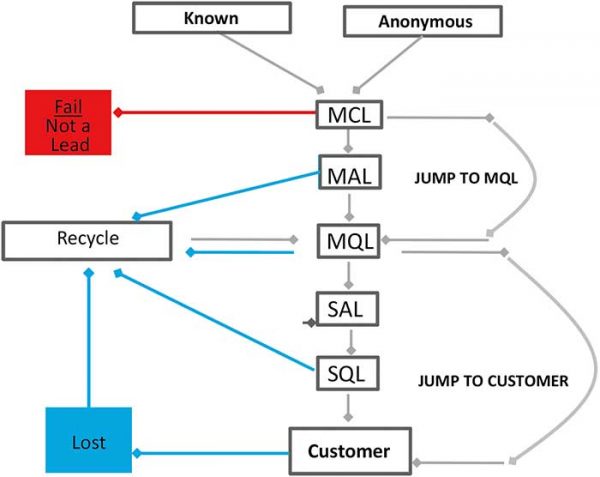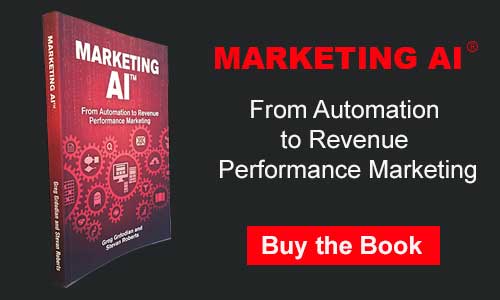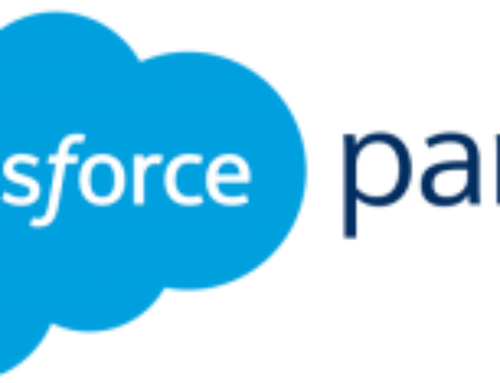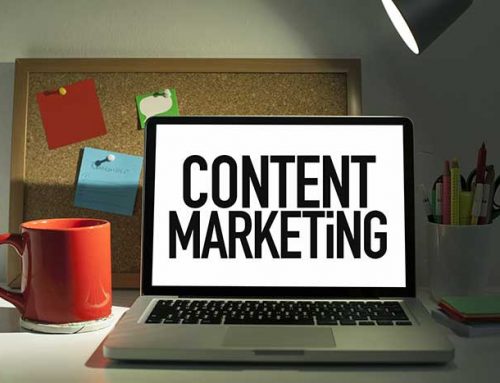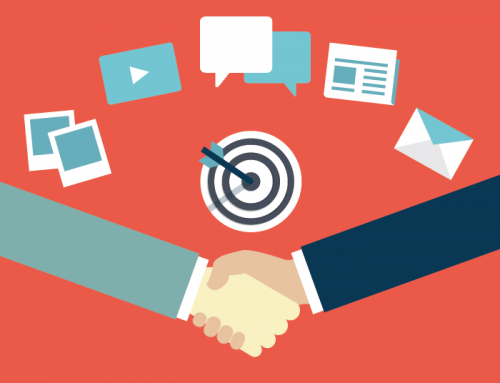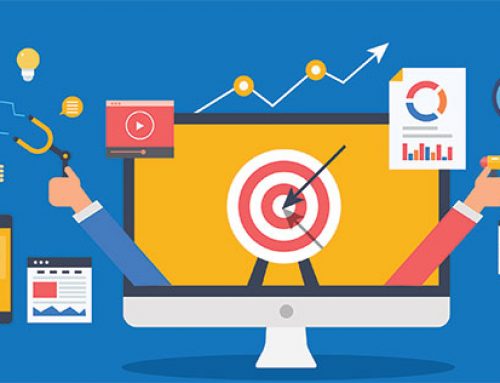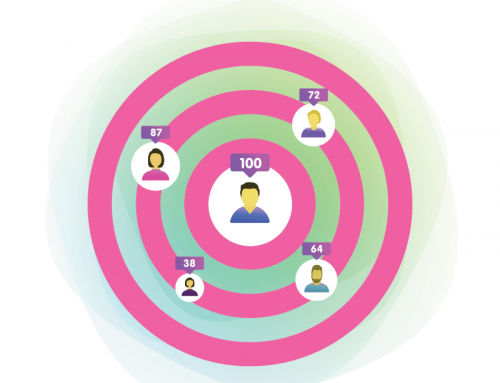Marketing automation is where data, content, and state-of-the-art technology meet, and investing in the right marketing tools now will mean the difference between leading your industry and being just another follower. There are many different marketing automation options, each of which has its strengths. Choosing the right marketing strategy is critical and knowing as much as possible about your best options is essential to making that decision. Let’s look at what each of these systems must have to give you what you need.
A well-designed system captures leads, scores those leads to indicate where your best prospects are, streamlines content creation, handles omni-channel content coordination, develops marketing flows to lead buyers through their decision-making process, and analyzes data. You can find separate software that accomplishes some of these same tasks, but those tools don’t communicate with one another. They can’t give you the big-picture view that automation can. It’s important to note that omni-channel marketing is not the same as multichannel marketing. Omni-channel is a multichannel approach to marketing that focuses on engaging with each customer or prospect through multiple marketing channels with a single voice to maximize recall and eventual conversion. It implies having complete knowledge of the ways all your marketing efforts perform and how that information will guide future business decisions.
MARKETING AI® gives you benefits — scalability, predictability, reproducibility, and sustainability (SPRS) — that no other marketing system does.
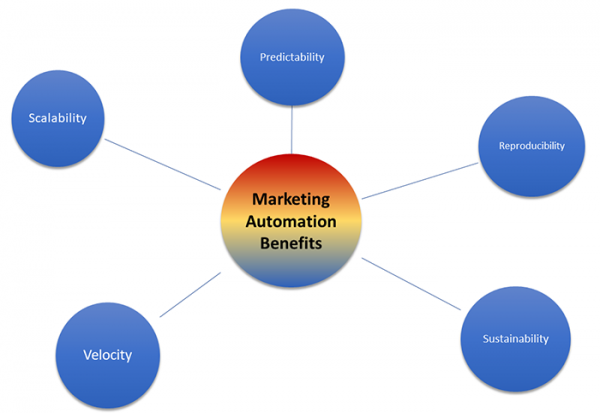
Marketing automation software offers full scalability, whether you’re working with an audience size of a few thousand leads or a few million. That’s important — even to smaller businesses, because successful small businesses won’t stay small forever. Your customers win, too, with a fully scalable system, because they get the attention they deserve, making your lead nurture program vastly more effective than it would be with conventional marketing techniques.
The term sales pipeline is often used to describe how prospects flow in at one end of the funnel and move through the process, picking up more information and getting more input that helps them make a buying decision. Like an actual pipeline, the conventional marketing pipeline can only handle a certain volume. Too much traffic and would-be customers no longer get the information they need. These potential customers leak out of the pipeline because they aren’t nurtured with a steady feed of information.
Automation turns a narrow, restrictive pipeline into a flexible, responsive pathway that accommodates as many customers as you feed into it. The same flow moves through your marketing funnel regardless of its volume, ensuring that the system grows with the company using it. Scalability is a must for revenue marketing. A smaller firm that outgrows its marketing strategy often loses what made it successful. But with an integrated, scalable automated system, it continues its initial success into the future.
Predictability
Marketing automation systems (MASs) deal in big data, crunching numbers that no single person or even team of data scientists could handle. Scientists use tools to manage and analyze huge volumes of data for everything from discovering new planetary systems to unraveling the human genome. Big data applications excel at predictive power, too, and that’s where these applications become especially interesting to marketers. Knowing where your customers are is important but being able to assess where they’ll be in the future is even more vital.
When a system has great predictive power, it also has greater predictability. You get the results you expect to get, and you can rely on your data to create a true picture of your customer base, your campaigns’ effectiveness, and your leads’ sales-readiness.
Marketing automation allows exponentially greater predictability of everything from lead acquisition and lead nurturing to customer retention. Lead ranking and management tools let marketing automation software accurately predict how many leads will flow into each part of your sales pipeline and when these leads reach a new level of sales-readiness. By knowing how many leads your marketing team must generate and nurture to reach a given revenue target, you have the knowledge you need to prepare for future growth.
Reproducibility
Reproducible testing results are a cornerstone of scientific inquiry. A few years ago, cold fusion had the world excited, but not for long. The anomalous testing results that the initial team achieved couldn’t be repeated, and without reproducible results, it just wasn’t science. Automation turns raw data into the science of marketing by reliably producing expected results.
A single success might as well be luck. With the reproducibility of marketing automation, you have sustainable growth. The software works not just with a single campaign, but also with every successive campaign, forming a comprehensive marketing strategy designed to boost revenue while serving your leads and customers what they need to make key buying decisions. Until you can pinpoint why a campaign was a success or why it fell short, you can neither excel in future campaigns nor protect yourself from costly failures.
Sustainability
Scalability, predictability, and reproducibility are meaningless without the continued ability to find new leads and new markets. Products and services go through lifecycles. In the early stages, the market of early adopters keeps your target narrow and focused. As the product or service is more widely accepted, the market will explode with an ever-increasing need to separate the wheat from the chaff. In the mature stage, the market will become commoditized, requiring you to nurture and mine every qualified lead. Markets aren’t infinite, so your growth strategy needs to be able to adapt to changes in the marketplace. Your market will inevitably drift, reach plateaus, or shift in response to competitors. Marketing automation allows a growth-oriented marketing strategy in a new market to evolve into relationship building in a maturing market and to seek new ways to add value to an established one. The marketing messages you send to grow a market are very different from those you give your prospects when you’re nurturing an existing audience or expanding in an entirely different direction. With marketing automation, your Marketing AI will be able to recycle and nurture every lead and identify marketing trends and new sectors of profitability that will sustain your business and allow you to outmaneuver your competition.
The Fifth Element: Velocity
Scalability, predictability, reproducibility, and sustainability contribute to a crucial fifth aspect of marketing automation: velocity. The speed at which your prospects move through your marketing funnel dictates how many sales you make, how much time your sales and marketing teams invest in leads, and how you manage increases in lead volume. All four elements of the SPRS formula affect velocity, and all four are equally important aspects of a complete system.
What Marketing Automation Isn’t
To get a better handle on what marketing automation software is, it’s instructive to look at what it isn’t. Revenue marketing can only happen when every aspect of your marketing software provides the scalability, predictability, reproducibility, and sustainability with the speed of automation. To take your marketing from expense to asset and to maximize revenue, your marketing tools must be both powerful and efficient.
Automation is often confused with smaller systems, which is like confusing an inflatable pool with the Atlantic Ocean. Automation is vast and interconnected, carrying huge volumes of trade and making business possible on a global scale; it isn’t something you have to inflate yourself. Marketing AI is transformative, not just a larger version of your current marketing process.
More than Email Marketing
Automation makes sending email easier, but that doesn’t make marketing automation another term for email marketing. For automated mailings and retargeting email campaigns, a fully integrated and automated system can pay significant dividends over a system that only manages email. Conventional email marketing has leaned toward impersonal, spray-and-pray techniques in the past, leading readers and Internet service providers (ISPs) to fight back with tighter regulations and antispam software. Marketing automation is a push in the other direction, away from email spam and toward more focused, more finely segmented audiences that are receptive to the messages they receive.
To put it more plainly, marketing automation isn’t just a better email tool for you — it’s better for your customers.
Email is far from the only task that marketing automation can handle, but it remains one of the most important. Email marketing offers outstanding efficiency, reach, and ROI in a highly measurable format. It’s a natural fit for automation and provides a wealth of data that informs other key marketing decisions, from direct mail to telemarketing. Automation ensures that disparate audiences get the right mail at the right time, maximizing open rates and responses.
Automated, But Not Autopiloted
Although marketing automation streamlines marketing flow and provides deeper, more relevant analytics, it is anything but mechanical. With automated systems, companies are better able to understand what their audiences want and deliver it to them. By automating triggered email blasts, creating personal URLs (personal uniform source locators, or PURLs) for landing pages, and coordinating content with search engine optimization/search engine marketing (SEO/SEM), your marketing team can focus on creating outstanding content and enhancing your brand.
Although its analytics and mailing triggers can be set-and-forget events, marketing automation doesn’t replace the need for creativity in your content; on the contrary, it’s content-rich. With automation, your marketing team has time to develop customized content. PURLs and JavaScript give every returning visitor a tailor-made landing page uniquely designed to meet that customer’s needs. Email, newsletters, and other content offers are also customized to address each marketing segment with highly relevant, targeted information.
Not Just for Big Firms
The first true marketing automation tools belonged solely to the big names. Their extensive IT departments worked on building custom systems for their organizations, while smaller businesses had trouble justifying the expense of such software, even when they had the IT personnel to research and develop it. The new generation of marketing automation software is no longer the province of those few companies. Small, mid- and large-size businesses can all use software-as-a-service (SaaS) marketing automation that puts these powerful tools within the reach of a far broader range of B2B and B2C businesses.
Elements of a MAS
One of the key benefits of marketing automation, particularly for small to midsize firms, is its flexibility. Automation makes you agile, and agility is critical to keeping pace with the ever-changing digital marketplace. Companies can choose which aspects of the software they want to prioritize, redesign the sales and marketing pipeline to optimize flow, and quantify the real value of leads throughout the marketing process. With SaaS, the service provider supplies all the technology and staff necessary at a fraction of the cost of doing it yourself, so that you can focus all your resources on marketing.
CRM and Marketing Database
Every business needs a customer relationship management (CRM) system, and a complete marketing automation strategy also incorporates these records. The marketing database serves as the system’s memory, recording everything about your customers and prospects, including their demographic and firmographic data. With this information, your marketing automation software can develop the well-segmented audiences that enhance the relevance of your marketing message and it lets you customize your content.
Data hygiene and enhancement takes place here to ensure that all your customer records are clean and current. Customers can’t respond to messages they never receive, so high deliverability is an important component of any targeted marketing campaign, and a well-organized automated marketing database makes it happen.
Relationship Marketing and the Customer Engagement Engine
As the marketing database is your system’s memory, this engine is its nervous system, sending and receiving commands from every part of your integrated marketing campaign while coordinating this information across multiple channels. It’s where the potential energy of your leads’ information becomes kinetic energy in the form of banner advertising, content marketing, email marketing, retargeting efforts, SEO/SEM, social media, telemarketing, and more. With state-of-the-art automation, your marketing team can get real-time feedback on lead management and progress through the sales funnel.
Behavioral elements can be as predictive as demographics, but in the initial stages of lead generation and lead nurturing, demographic and firmographic data set your baseline. Job function, industry, company size, and other relatively static data form the foundation of your prospects’ profiles, but as your marketing automation tools collect behavioral data that reveal how people interact with your brand, you develop a far more sensitive and predictive way to differentiate leads.
Typically, a marketing team lines up the usual suspects when finding target audiences for a campaign. Looking to the usual prospect base by demographics and firmographics alone causes two problems: First, this data provides a snapshot, not a record of actions over time as prospects move through the marketing pipeline. Second, the people you consider your most promising demographic and firmographic leads are just as interesting to your competitors. Firms that look only at this data will find themselves reaching for an increasingly narrow share of a crowded market.
Because firmographic and demographic data is a snapshot, behavioral data is a movie starring your leads. Still images contain plenty of valuable information, but they don’t create a narrative the way film can. Behavior-based on a lead’s activity can be a powerful predictor of the lead’s readiness to buy, and automated marketing systems closely track these buying signals.
Analytics
By calibrating, measuring, and optimizing every aspect of your Lead Lifecycle model, your marketing team builds a unified revenue-marketing strategy that transcends activity-focused marketing. Analytics are crucial to the success of your company because by keeping track of how many leads are moving through each stage of the Lead Lifecycle, your AI can analyze the health of your marketing program and how well your channels, content, and sources are delivering on the promise of sending qualified leads to your sales team. Think of the system’s analytics database as its reasoning faculties, delivering feedback about what works and what needs to change. Because the analytics derived from full marketing automation draws from a much deeper knowledge pool, it provides a more nuanced view of your leads, your sales pipeline, and your overall marketing strategy.
Programmers have a saying: “Garbage in, garbage out.” In other words, even a sophisticated program can only interpret results based on the original input it receives. Each element of an automated marketing system works in concert and is fully integrated with its counterparts, ensuring more accurate data from the outset. The records in the system’s marketing database allow more refined lead segmentation for delivery through the marketing engine, which in turn provides more complete data for lifecycle analysis. It allows you to monitor your funnel weekly or monthly, and to keep track of changes to lead scoring, workflows, thresholds, lifecycles, and programs. Are qualified leads down? Is the sales team asking for more leads? Is the pace at which the leads move through the funnel increasing or decreasing? Analytics gives you the insight necessary to improve the programs that are having an impact on your revenue. If too few or too many leads are being rejected by sales, your Marketing AI can adjust the lead score. If too many leads are lacking the budget, authority, need, and timing (BANT) required to buy from you, your MAI can improve the quality by tightening the demographics, keywords, and marketing channel qualifications of the sources that you use.
A MARKETING AI® Mindmap
In this series Marketing AI®: From Automation to Revenue Performance Marketing, you’ll learn much more about what marketing automation is, what it isn’t, and where it fits into a marketing strategy. You’ll also discover more about traditional marketing through the lens of automation and read a compelling case study about how one company went from finding itself in a marketing dead zone to flourishing as an automated, intelligent, and responsive organization that converted its old marketing plan into a revenue marketing strategy.
Sign Up For Our Weekly Series on Marketing Automation
©2021 Reach Marketing, LLC. All rights reserved. MARKETING AI is a registered trademark of Reach Marketing, LLC


